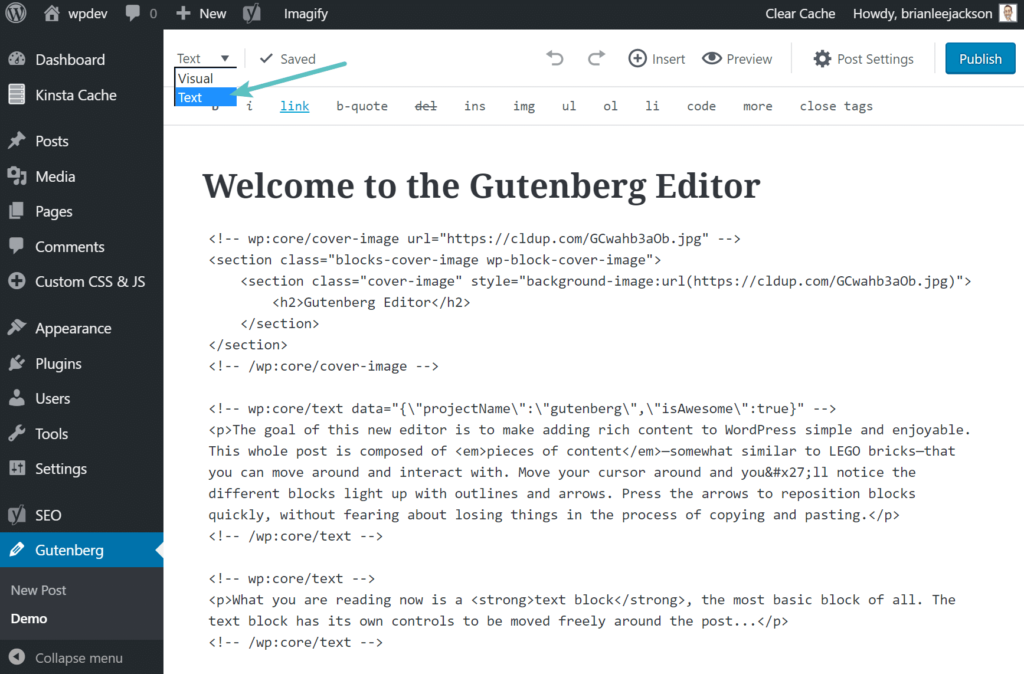This is part 1 in our Gutenberg series. Be sure to check out part 2: Gutenberg: Embracing the New WordPress Editor.
At CodeGeek, we work hard to keep our fingers on the pulse of the website development world. That pulse has quickened, and there’s a significant change called Gutenberg that is coming to every WordPress website on the planet—about 26% of the web.
“The goal of the block editor is to make adding rich content to WordPress simple and enjoyable.” —Gutenberg plugin description on WordPress.org
Named after the famous printing press (another invention that revolutionized publishing), Gutenberg will impact all websites built on the WordPress CMS. And we’re here to break down what you need to know before the ch-ch-ch-change actually happens.
What is Gutenberg?
Gutenberg is a new version of the WordPress editor, which you use to edit text and add images to your website. This new content editor is being redesigned to behave more like a “page builder” or “visual composer.” Instead of a traditional editorial field, Gutenberg uses content blocks (e.g. text, videos, images, quotes, etc.) so that users can add blocks individually, filling each block with content and then positioning them as they go along.

How will Gutenberg affect my website?
With Gutenberg in place, your website’s editing interface (how you add and edit content) will be different. The first thing you’ll likely see is a “Try Gutenberg” button in the admin area, which is anticipated with the WordPress 4.9.6 update coming out around May 15.

What actions should (or shouldn’t) I take?
For the time being, we strongly recommend that you do NOT click the “Try Gutenberg” button in the admin area of your website.
This is the largest change to WordPress in years, and as with any update, there is the possibility of some unexpected interactions with existing WordPress themes or plugins. Our recommended approach is to wait a few weeks—or possibly a few months—to see if any issues arise. When the time is right, we’ll explain what the next steps should be.
Don’t worry. We’ve got this.
Our CodeGeek team is already knee-deep in the research and testing of Gutenberg. We have multiple test sites up and running with the Gutenberg plugin, which is designed to give developers a taste of what is to come. Everyone, including the folks at Automattic (creators of WordPress) and all the theme and plugin developers out there, are working hard to ensure that this transition goes as smoothly as possible.
What’s next for you, our client.
Rest assured that the Geeks are actively working on plans to successfully integrate Gutenberg into your WordPress site. We will also be announcing a limited schedule of workshop-style trainings for our clients after Gutenberg has launched.
Right now, no action is required on your part—in fact, we recommend that you don’t take any action at all. We will keep you posted on what happens next.
Want to know more?
If you’d like to learn more about Gutenberg, we recommend the following resources:
- Gutenberg: Embracing the New WordPress Editor, by CodeGeek
- Introducing a new way to WordPress, by WordPress.org
- Gutenberg Design Principles, by WordPress.org
- Diving Into the New Gutenberg WordPress Editor, by Kinsta
- All You Need To Know About WordPress Gutenberg, by Multidots
As always, if you have any questions, the Geeks are happy to chat.
